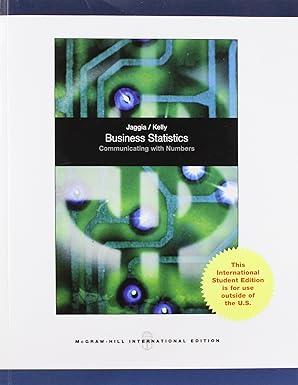For quantitative data, a frequency distribution groups data into intervals called classes, and records the number of
Question:
For quantitative data, a frequency distribution groups data into intervals called classes, and records the number of observations that fall into each class. A cumulative frequency distribution records the number of observations that fall below the upper limit of each class. A relative frequency distribution identifies the proportion (or the fraction) of observations that fall into each class. A cumulative relative frequency distribution shows the proportion (or the fraction) of observations that fall below the upper limit of each class. R-69
Fantastic news! We've Found the answer you've been seeking!
Step by Step Answer:
Related Book For 

Business Statistics Communicating With Numbers
ISBN: 9780071317610
1st Edition
Authors: Kelly Jaggia
Question Posted:





